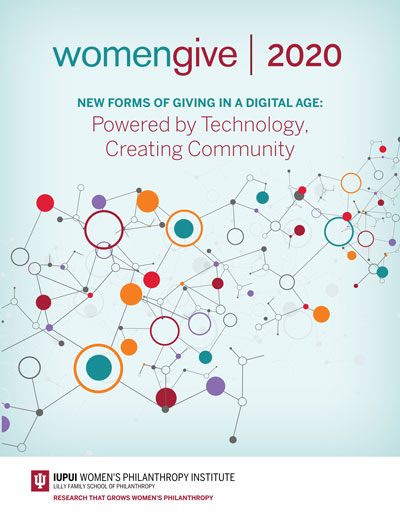What is this report?

This report looks at how gender impacts how men and women use the Internet and social networks and the impact on giving by looking at case studies of platforms, apps and movements. The data came from four datasets from online donation platforms and apps—Charity Navigator, GlobalGiving, Givelify, Global Impact’s Growfund tool—that total 3.7M+gift transactions over at least two years.
What are the key findings from the article?
- Women give a greater amount of gifts to charities than men. Women gave nearly 2/3 of gifts across all platforms. While men’s gifts were larger in dollar amount, women gave more money overall from the volume of their gifts.
- Women are more likely to give to smaller sized organizations than men. For instance, Giving Tuesday data found that women gave 66.3% of gifts to organizations with revenue less than $5M. GlobalGiving similarly found that women gave 65.8% of gifts to organizations with revenue less than $5M.
- Women give significantly more to women’s and girl’s organizations. For instance, Giving Tuesday found that women gave 72.3% of gift count and 69.4% in amount of dollars to women’s and girl’s causes. The only major exception was Growfund, where while women gave 57.1% in total gifts to such causes, which only accounted for 13.5% of total dollars given.
- Going beyond dollars will better engage donors than just dollar amounts. Giving Tuesday is a case in point. Initially, Giving Tuesday was just concerned with amounts of donations and dollars raised. But Giving Tuesday realized that there are more ways to take action and they have broadened their scope to include volunteering, asking others for money, and networking assistance.
- While giving online allows donors to find causes that best suit their needs, it presents an opportunity for platforms to “curate” causes for prospective donors. GlobalGiving uses an algorithm to “provide more visibility to certain projects.” While there’s a debate about the benefits and negatives to algorithms, this presents an opportunity.
- However, there were some interesting differences with Growfund, a “$0-minimum donor-advised fund.” The data found a more even split in number of contributions to accounts by both genders. However, women gave less overall their accounts than men. Moreover, men distribute more funds from their accounts to nonprofits but women give in greater amounts to nonprofits in terms of gift size and total dollars.
What can I do as a result?
- Find out how you can leverage your online giving to attract women donors. In Kathleen Loehr’s Gender Matters, she writes about what image you are putting out to prospective donors. What does your website, your social media, giving platforms and other marketing collateral say about your organization? What kind of images of people are you showing? Are you showing images of just men or just women or both? What stories are you telling? Your organization may want to think about what their digital presence says about the values of your organization as a whole. Moreover, have you identified possible “influencers” in your donor population who may champion your cause.
- Since fundraising is about relationships, platforms need to create community online. The report explains: while giving online presents new opportunities, there is the challenge of how to maintain engagement with donors and increase their trust. The report aptly says: “The online world should enhance and add to the in-person experience, rather than replace it.” How can your organization build community with online donors? Maybe consider having special webinars/online meetings, forums, and other tools to help create that sense of community.
- Figure out how you are stewarding your online donors. Do you send them a personalized email thanking them for their gift, as Penelope Burk recommends? Or do you rely on the automatic email receipt to do the job for you? Do you treat your online donors like your other donors? Double the Donation found that only 25% online-only first time donors were retained in the next year, which suggests there may be an issue with stewardship of these donors. Are you also being inclusive of philanthropy that isn’t strictly dollars? What about volunteering and networking?
- If you are a small-sized organization, you might want to see how you compare with the data. Do you know the gender breakdown of online giving at your organization? Many organizations don’t track gender (and this study noted that it used first names which was imperfect) so it may be tricky. But it might help you have a better sense of your constituency.
Additional Resources
- New Forms of Giving in a Digital Age Full Report | Women Give 2020
- Charitable Giving Report | Blackbaud 2019
- Gender Matters | CASE
- Gender and Giving Across Communities of Color Review | Aspire Research 2019
- Women’s Hack Guide to Prospect Research | Jennifer Filla 2018
- Donor Centered Fundraising | Penelope Burk 2018
- Fundraising Statistics: Charitable Donations | Double the Donation 2020